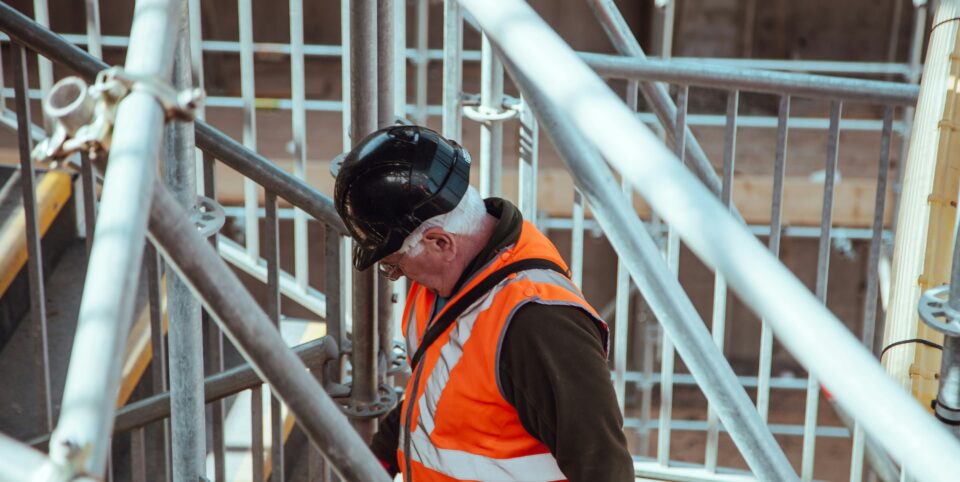Contact
020 4515 6728
info@ccameron.co.uk
Charles Cameron & Associates
Blackfriars Foundry
154-156 Blackfriars Road
London SE1 8EN
Demystifying building surveys
May 16, 2024
Information published was correct at the time of writing
Among the most critical steps when planning to buy a property

The building survey you require will largely depend on the type and age of the property you aim to purchase. The question that arises is, which one should you opt for?
A building survey is essentially an evaluation of a property’s state. These surveys come in various forms, each offering their unique advantages, and are categorised by levels. The higher the level, the more comprehensive the survey.
A survey is usually undertaken when considering buying a property in England, Wales and Northern Ireland. In Scotland, a survey known as a Scottish Home Report is acquired before the property is placed on the market.
ROLE OF ACCREDITED SURVEYORS
Professional surveyors execute building surveys. Using a surveyor accredited by RICS (Royal Institution of Chartered Surveyors) ensures they have undergone expert training and are updated with any industry changes. Consulting with a building surveyor for their expert recommendation will be beneficial. This could help you avoid the pitfall of choosing an unsuitable survey and subsequent rejection.
EXPLORING THE VARIOUS BUILDING SURVEYS
Let’s delve into the different types of house surveys. If you are contemplating buying an older property, one that has had substantial construction work or one where you intend to carry out building work, then a Level 3 Building Survey would be ideal. This is a more thorough survey that will underline potential issues and the estimated cost of work required to rectify them.
DECIDING BETWEEN A BUILDING SURVEY AND A HOMEBUYER REPORT
Conversely, a Level 2 Homebuyer Report is more rudimentary but is the most suitable for most properties. A Building Survey will likely be a more appropriate option if your property requires detailed analysis and information. This could be due to the property being older, made from unusual material or having undergone significant renovations.
DECODING THE HOME BUYER REPORT (LEVEL 2 SURVEY)
The Level 2 Homebuyer Report is ideally suited for modern, standardised properties constructed from common building materials and in fair condition. Prepared in a standardised format laid down by the Royal Institution of Chartered Surveyors (RICS), this report provides ratings for the condition of each element of the property. The survey includes all permanent structures within the property, such as garages.
HIGHLIGHTING FEATURES OF THE HOMEBUYER REPORT
The Homebuyer Report plays a crucial role in highlighting significant issues that could potentially affect the value of the property. It also offers advice on the ongoing maintenance needs of the property.
The assessment of the property’s condition is based on visual inspection, with no manual testing involved.
AN OVERVIEW OF THE BUILDING SURVEY (LEVEL 3 SURVEY)
On the other hand, the Level 3 Building Survey provides a more comprehensive evaluation, offering an in-depth inspection of the property’s interior and exterior. This survey is particularly suited for certain properties, which may be older, constructed from unusual materials like thatch or have undergone significant building work.
DIVING DEEPER INTO THE BUILDING SURVEY
The Building Survey offers a detailed report and analysis of the property’s construction and overall condition, involving visual checks on accessible areas such as roof space or cellars.
A full structural survey under this level examines any issues that might jeopardise the structural integrity of the building. These could include damp, dry rot, woodworm infestation or potential hazards such as large trees near the structure.
UNDERSTANDING THE MORTGAGE VALUATION
The mortgage valuation is not technically a survey but an assessment your mortgage lender conducts. The aim is to ascertain if the property value aligns with the amount you intend to pay and whether the lender should grant you a mortgage on it.
Valuation methods can range from ‘drive-by’ assessments to more in-depth property inspections. However, the valuation specialist’s primary concern is identifying issues that could potentially affect the security of the lender’s loan.
LIMITATIONS OF MORTGAGE VALUATIONS
It’s crucial to understand that the valuer is under no obligation to disclose any structural problems to you. The lender’s sole interest is ensuring that they can recover their loan if necessary.
INTRODUCING THE CONDITION REPORT (LEVEL 1 SURVEY)
The Level 1 Condition Report is the most rudimentary of reports, offering a general overview of the property’s condition. While this may suffice for new builds requiring a basic assessment, most properties will require a more detailed Homebuyer Report (Level 2 Survey).
DECODING SCOTTISH HOME REPORTS
Scottish Home Reports differ slightly, as the property seller provides them. To sell a property in Scotland, an up-to-date Home Report is mandatory, which potential buyers must have access to before making an offer. Therefore, a Home Report is a requisite if you plan to sell a property in Scotland.
Don’t forget, our professional friendly advisors are on hand to support you and can help you explore all of your options.



